The Free-Ride offspring were on spring break last week. Since their mother was digging herself out of a pit of grading, they got to visit the Grandparents Who Lurk But Seldom Comment. Apparently it wasn’t all playing bucking broncos with the cat — they also visited an aquarium:
Dr. Free-Ride: You went to an aquarium? Do you remember which one?
Younger offspring: No, but it was a little far from [the house of the Grandparents Who Lurk But Seldom Comment].
Dr. Free-Ride: And what did you do there?
Younger offspring: This man who worked at the aquarium mixed grunion eggs and this sand-ish, dirt-ish stuff. And then he poured water into a bowl after he put the grunion eggs into it.
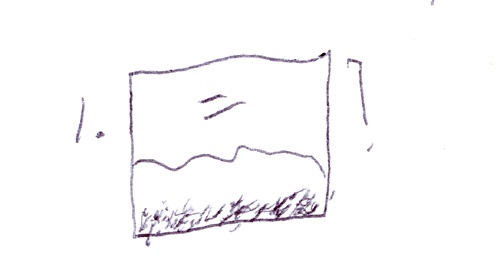
Younger offspring: I shook it for one hundred seconds or more, and they pop when they hatch.
Dr. Free-Ride: Do you hear them pop, or do you just see them pop?
Younger offspring: Well, when we shake them, our hand is mostly on the bowl, so we don’t hear them pop or see them pop.

Dr. Free-Ride: Hmm. So basically, you’re imagining that in the process of going from unhatched egg to hatched egg, there must be some sort of popping involved.
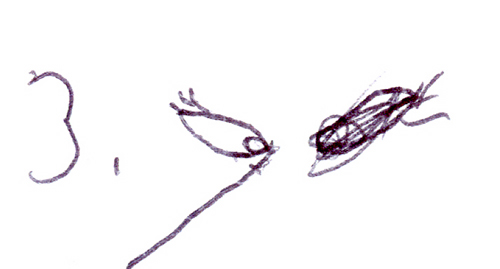
Younger offspring: Yeah. We got to see what hatched after the shaking. First you see eyes and then they turn out to be grunions.
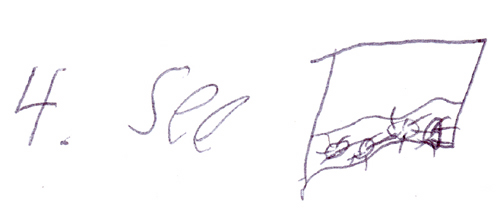
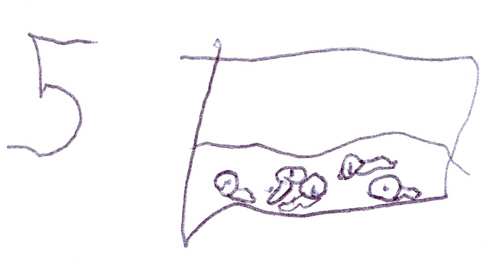
Dr. Free-Ride: So what is a grunion, exactly? Is it like an onion?
Younger offspring: (with a practiced eye-roll) No. It’s a fish! The man at the aquarium said that after they grow up, he’s going to return them to the ocean.
Dr. Free-Ride: That sounds nice
.
Younger offspring: And, he said they run on the shore.
Dr. Free-Ride: They run?!
Younger offspring: Yeah!
Dr. Free-Ride: How do they run?
Younger offspring: I don’t know. He didn’t tell us how.
Dr. Free-Ride: So you guys didn’t get to see grown-up grunions at all?
Younger offspring: We didn’t. They were just babies and then we poured them into this big bucket.
Dr. Free-Ride: Oh. Did he say where he got the grunion eggs?
Younger offspring: At an ocean, I think.
Dr. Free-Ride: So the eggs were laid by grown-up grunions running around the beach (whatever that means)?
Younger offspring: I don’t know if they run around on the beach and lay their eggs on the beach at the same time.
Dr. Free-Ride: OK. But he got these grunion eggs and they were separate from the sand before you mixed them with the sand and water?
Younger offspring: He mixed the grunion eggs with the sand after he caught the grunion eggs.
Dr. Free-Ride: Oh, so they already had the sand mixed in when you added the water and shook?
Younger offspring: Yeah.
Dr. Free-Ride: I see. Were you able to see the eggs themselves in the sand? Did the eggs look different from the sand grains?
Younger offspring: I couldn’t see them until we shook it and they floated around and they popped.
Dr. Free-Ride: Maybe grunion eggs look a lot like sand so they’re hard for predators to find and go NOM NOM NOM?
Younger offspring: Actually, they’re see-through, but they were digged in the sand.
Dr. Free-Ride: Oh, they were buried deep in the sand. You know, some grains of sand are kind of see-through, too.
Younger offspring: Are you going to put this on the Friday Sprog Blog?
Dr. Free-Ride: Can’t we ever just have a discussion about science for the sake of having a discussion about science?
Younger offspring: I want you to!
Dr. Free-Ride: OK, but you’re going to have to draw me a picture then.
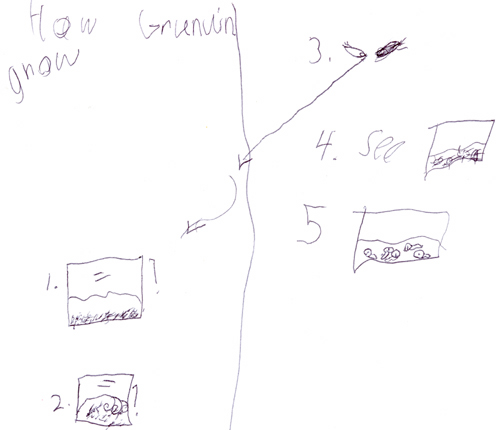
* * * * *
The elder Free-Ride offspring offers a picture of a more mature grunion. I am assured that this is not an appetizer. The onion is a habitat for the fish.


Yes, you were right to ask for Visual Aids.
I found them very helpful because they added to the presentation value, and they helped explain the Grunion Conundrum. Thank you YFRO (Younger Free-Ride Offspring).
After viewing the EFRO (Elder Free Ride Offspring) visual, I got hungry, and now I have to go eat my lunch. I think I want a Bloomin’ Onion for some reason. Thank you EFRO.
How DO you do it? Every time I bring up “nerd topics” with my nephews and nieces, they just roll their eyes at me. Well, not every time. I explained the platypus to my sister’s son and daughter some years ago and they were fascinated. Of course, I had to show them a picture in the encyclopedia for them to accept that I wasn’t just making things up. Until then, they thought I’d lost my mind.
Next question: Do grunion get bunions from running around on the beach?
Younger Sprog,
Did you know that when a type of fish (like grunions) all get together to do a thing it’s called a run? When salmon all get together to swim upstream so they can produce more salmon, that is called a salmon run.
We have grunion runs down here in San Diego, and that’s when the grunion all get together to produce eggs they bury in the sand on the beach. This is done at night, when critters from the land won’t bother them, and when the high tide is really high so critters from the sea won’t eat their eggs.
Your mom? Your mom likes to tease. Mommies teasing their sprogs is a lot like tickling. They like to see you laugh, and it makes you and Mom closer. It keeps the two of you comfortable with each other. It also means your mommy is strange, but you knew that already.
BTW, your drawings are getting better. You’re learning from experience, and your control over your muscles is getting better. Which means your nervous system is maturing, and you’re getting better through practice. A good thing when you get right down to it. I’m looking for your next set of drawings and your talks with mom.
You have been tagged with the Song Chart Meme.
Grunion do their runs on the beach only at night and only 2-4 days after the Full Moon. Actually, if you take adult grunions into the lab, they will try to do a run every 28 days or so even if they have no idea when the moon is full.
Here is a chart that shows the timing of runs and spawning in relation to tides and moon phases.